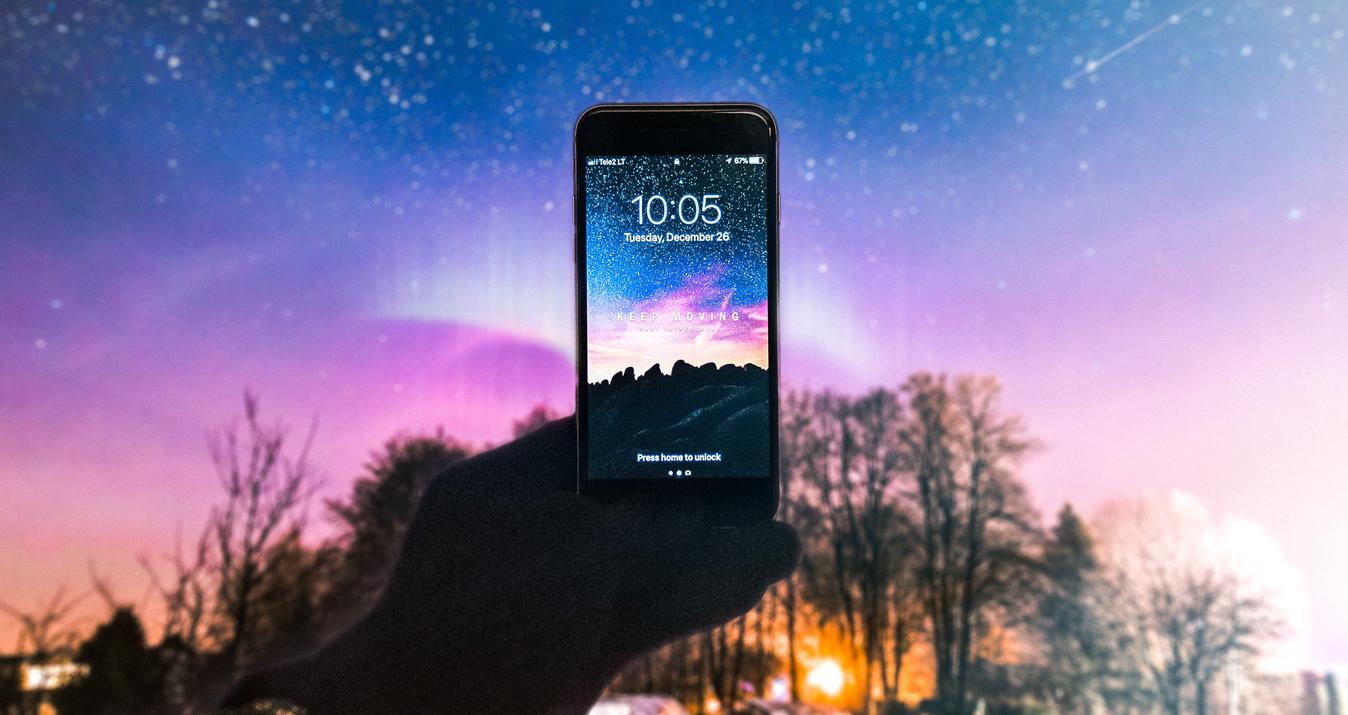How To Photograph Fall Foliage And Capture The Vibrant Beauty
August 07, 2023

Learn How To Capture The Vibrant Hues And Natural Splendor Of Autumn Landscapes In Breathtaking Detail. All The Techniques And Equipment Needed To Capture The Mesmerizing Beauty Of Autumn.
Learn how to capture the vibrant hues and natural splendor of autumn landscapes in breathtaking detail. All the techniques and equipment needed to capture the mesmerizing beauty of autumn.
Fall evokes associations of warm sun shades, the smell of fallen leaves, coziness, and barely perceptible coolness. Until all the colorfulness of this season has turned into gray, rainy days — you need to have time to take impressive pictures that will captivate the atmosphere. Let's figure out what we need most for this process.
Autumn shades create an incredible spectacle of nature's beauty, where trees transform into vibrant yellow, red, brown, orange, and gold palettes. Fall leaf photography requires a keen eye and artistic flair. In addition, you will need knowledge of the appropriate settings of your camera, the basics of choosing angles, and, of course, the nuances of post-processing your pictures. You will also learn more about Luminar Neo, an AI-based software that allows you to change the color of a photo in two clicks.
Find Inspiration Among Autumn Landscapes
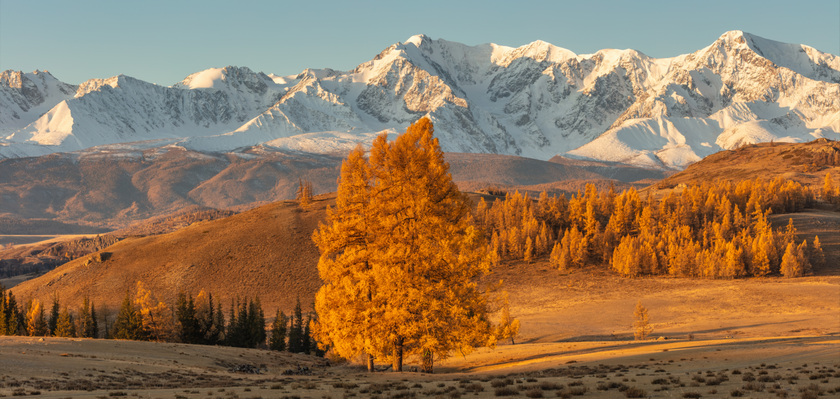
Every year, the Internet is filled with hundreds of thousands of bright images, as fall foliage photography is the season's most popular trend. The key to capturing autumn's beauty lies in the timing. As the days appear shorter and the temperatures drop, trees transform into a kaleidoscope of colors. Patience is essential, waiting for the peak of the fall foliage when the landscape bursts into its full glory. The leaves change their pigments due to the decreasing daylight, producing the rich reds, fiery oranges, and golden yellows that define autumn landscapes. Fall foliage photoshoot is the most popular among professional photographers and amateurs.
To bring out the vibrancy of the colors, shooting during the "golden hour" is crucial. The soft, warm light of sunrise and sunset enhances the autumnal hues, casting a magical glow upon the landscape. During this time, shadows are longer, adding depth and dimension to the scenes. The interplay of light and shadows can make a masterpiece from an ordinary set.
When composing autumn landscapes, focus on finding balance and harmony. Framing elements such as foliage, bodies of water, and trees can add depth and context to the photograph. Look for leading lines, like paths or rivers, to draw the viewer's eye into the image and create a sense of movement.
Consider using a polarizing filter to reduce glare and increase color saturation. It will intensify the richness of the autumnal tones and make the colors pop. Additionally, experimenting with different camera settings, like adjusting the white balance or shooting in RAW format, allows for more flexibility in post-processing to bring out the true essence of fall.
While grand landscapes are undoubtedly captivating, take notice of the small details that define autumn. Fallen leaves, dewdrops on foliage, and mushrooms emerging from the forest floor can add a touch of magic to your photographs.
Finally, embrace the spirit of exploration during this season. Venture to different locations, from forests and mountains to parks and gardens, to capture the diverse expressions of fall colors. Each place has its unique charm, waiting to be discovered and preserved through the lens.
Beauty In Details
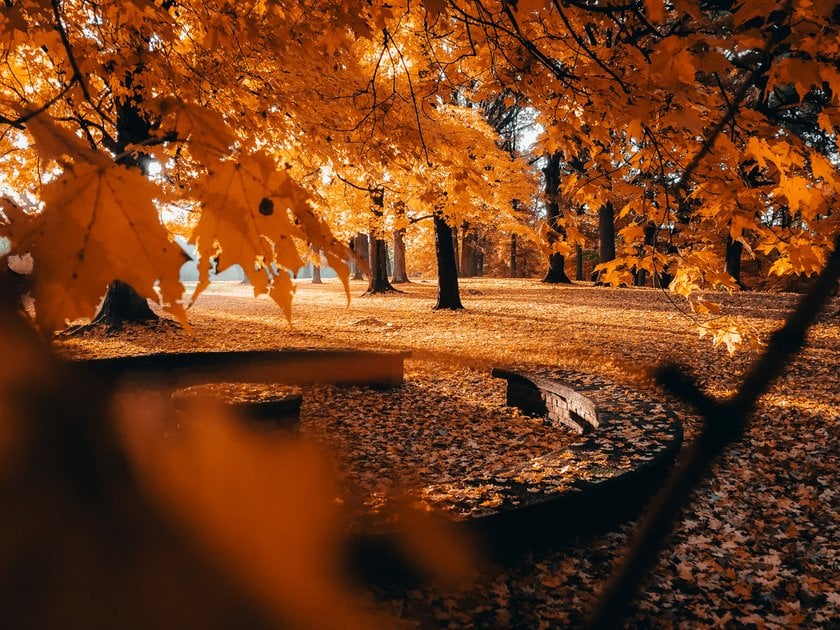
In contrast to landscape images, capturing individual objects allows you to create amazing compositions in fall colors photography. Since bright plants are the main actors in the autumn play, we suggest focusing on some aspects of their capturing. Use a shallow depth of field to isolate the subject and create a dreamy, bokeh-filled background. Focus on fallen leaves, dewdrops, or unique textures to add interest. Incorporate leading lines and natural frames to enhance compositions. Look for patterns and symmetries amid the foliage. Embrace backlighting to illuminate leaves, creating a translucent effect. Patience and observation are key as autumn's transformation is rapid. Capture the essence of this season by celebrating the delicate and intricate details of plants amidst nature's mesmerizing spectacle.
The Tiniest Objects
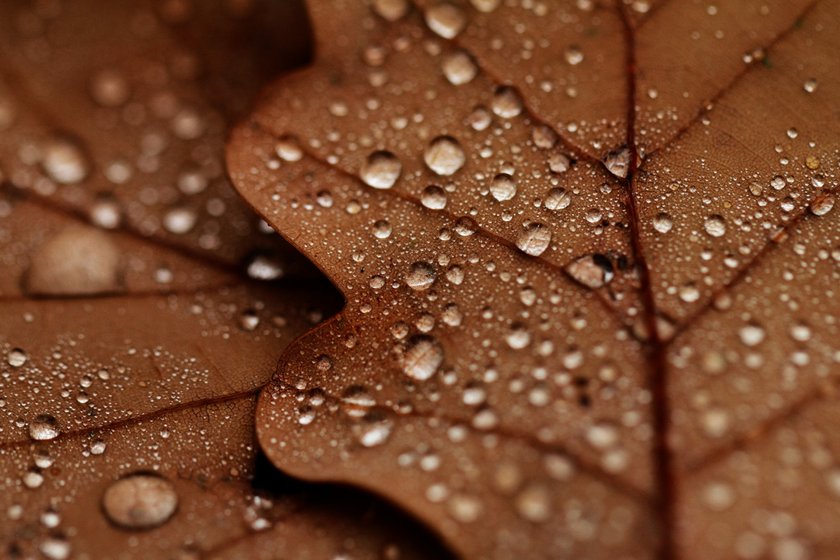
Get an interesting experience by trying to capture the tiniest details around you. Leaf macro photography is a fascinating genre that allows you to explore leaves' intricate details and textures up close. Some nuances should be observed to achieve stunning results.
First, this technique requires patience; even the slightest movement can disrupt the scene. Take your time and be mindful of your surroundings. Using a diffuser to block wind will help keep the leaf steady and reduce blur. A sturdy tripod minimizes camera shake and allows for precise adjustments.
Choose a small gap (high f-stop, e.g., f/8 to f/16) to increase the depth of field and ensure the entire leaf is in focus. Use diffused natural light or a softbox to avoid harsh shadows and highlights. Backlighting can reveal the leaf's translucency, enhancing its beauty. Experiment with various compositions to highlight patterns, veins, and textures. The rule of thirds and leading lines can create engaging visuals.
For extreme detail, consider focus stacking. Capture multiple shots with different focus points and merge them in post-processing to achieve a fully sharp image. Fine-tune contrast, sharpness, and colors during post-processing to reveal the leaf's intricate details.
Explore different types of leaves, angles, and lighting setups to discover unique perspectives and showcase nature's artistry through the lens. Get inspired by nature and look for new leaf photography ideas in unusual interpretations. By understanding these nuances and honing your skills, you can unlock a captivating world of details that often go unnoticed, turning simple leaves into extraordinary works of art.
Capture The Moment

Autumn leaves falling photography is a delightful challenge for photographers. Here are some tips for freezing these fleeting moments:
- To avoid motion blur, use a fast shutter speed.
- Focus on composition by incorporating leading lines or contrasting backgrounds to add depth.
- Embrace the soft, warm light of the golden hour to enhance the colors and create a dreamy atmosphere.
- Seek locations with a dense concentration of leaves to amplify the falling effect.
To add dynamism, experiment with different angles, from overhead shots to low grades. Be patient and ready to capture the serenity and grace of autumn leaves as they descend, creating mesmerizing images of nature's transition.
Make Your Camera Ready

We have already briefly disassembled how to photograph plants; now, let's figure out the best camera settings for fall foliage to capture vibrant colors and intricate details.
Aperture: Use a medium to narrow gap (around f/8 to f/16) to achieve more depth of field to ensure the foreground and background foliage are in focus. It will also help create starbursts from sunlight filtering through leaves.
Shutter Speed: In well-lit conditions, opt for a faster shutter speed to avoid motion blur caused by the wind or movement in the scene. However, experiment with slower shutter speeds to capture the gentle movement of leaves or flowing water.
ISO: Keep the ISO as low as possible to reduce noise and maintain image quality. Aiming for ISO 100-400 in bright conditions and low-light situations makes it slightly higher (up to ISO 800).
White Balance: Set the white balance to "Daylight" or "Cloudy" to retain the warm tones of fall foliage. Alternatively, shoot in RAW format to adjust the white balance during post-processing.
Shooting Mode: Use aperture priority mode (A or Av) for control over depth of field or manual mode for full control over all settings.
Focus: Utilize manual focus or single-point autofocus to ensure precise focus on the main subject. Focus on the most vibrant or prominent element in the scene.
Polarizing Filter: Using a circular polarizer helps to reduce reflections and increase color saturation, making the natural colors pop.
Composition: Compose your shots carefully, considering leading lines, framing elements, and the rule of thirds. Look for contrast and textures to make your images visually attractive.
Remember to explore different angles and perspectives to find the most captivating compositions. Being patient and observant of the changing light and weather conditions will help you capture the essence of fall foliage in all its natural splendor.
Enhance Foliage Shade
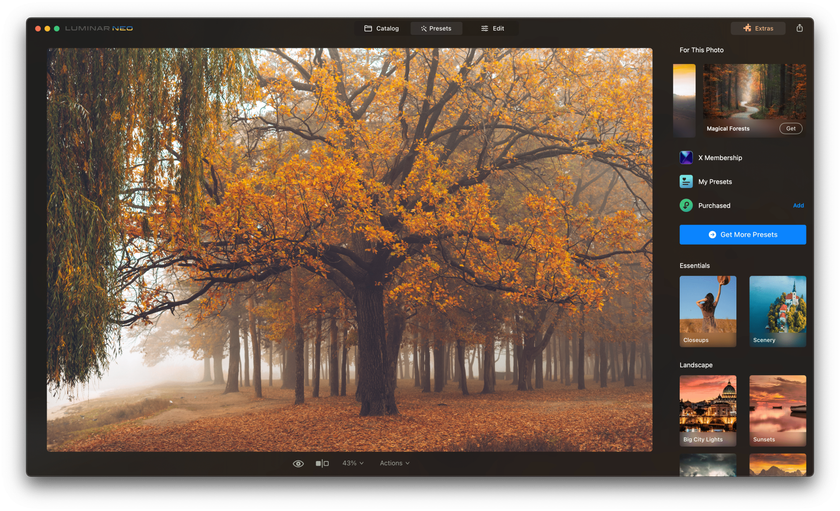
Photographing fall colors can give you vivid shots, but what if I told you they could improve? To enhance foliage shade, use photo editors. First, you must set up the exposure and contrast to highlight the subtle details in shadows. Increase the saturation and vibrance to intensify the colors. Use the "Shadows" slider to brighten the dark areas without affecting highlights. Use the "Brush" tool to selectively brighten specific foliage or parts of the image for more precision. Utilize the "HSL" (Hue, Saturation, Luminance) panel to fine-tune individual colors, emphasizing the green hues of the foliage. Lastly, apply a slight vignette to draw attention to the central subject and give the image a natural, appealing look.
Advanced yet easy-to-use photo editor
Get Luminar Neo NowSome photo editors may have presets for autumn landscapes, making editing easier. Luminar Neo even went further and created a unique function foliage enhancer. With it, you can easily and quickly change the coloring of the desired area without exposing other regions to the influence of processing. It creates a gentle natural effect in the photo.
Bottom Line
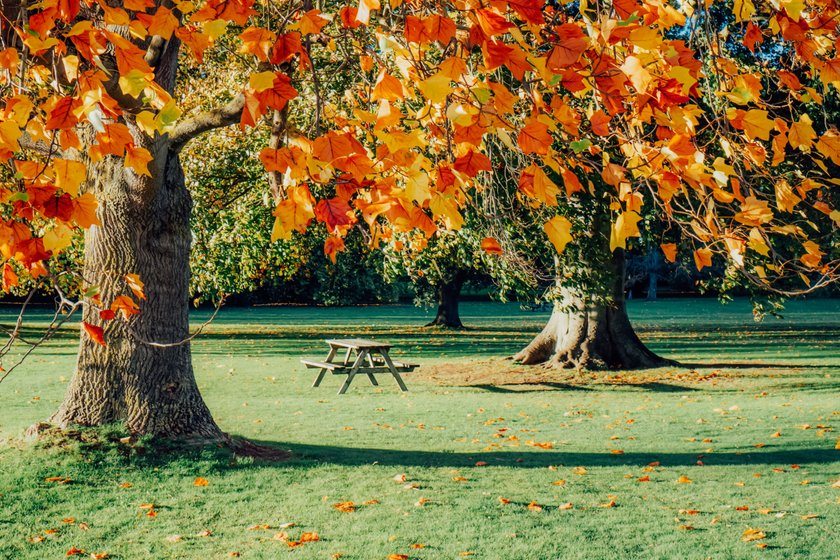
As summer fades away, nature adorns itself with a breathtaking display of colors, marking the arrival of autumn. One must embrace this enchanting time's unique characteristics and spirit to capture the essence of fall landscapes. Capturing the vibrant hues and natural splendor of autumn landscapes is rewarding for any photographer. Through careful timing, creative composition, and a keen eye for detail, one can immortalize the fleeting beauty of fall, bringing the viewer into the heart of this enchanting season. So, grab your camera and embark on a journey to embrace the breathtaking beauty of autumn.
Today we figured out how to photograph fall foliage. Let's briefly summarize. Embrace golden hour light to accentuate warmth and depth, casting long shadows that add drama. Frame foliage against clear blue skies or calm waters for stunning reflections. Use a polarizing filter to reduce glare and intensify hues. Experiment with varying angles and perspectives to create dynamic compositions. Use modern trends in processing your photos to improve their appeal to the audience.



